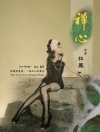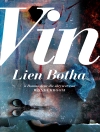Roughness is the sensual quality most often associated with Rembrandt’s idiosyncratic style. It best defines the specific structure of his painterly textures, which subtly capture and engage the imagination of the beholder. Rembrandt’s Roughness examines how the artist’s unconventional technique pushed the possibilities of painting into startling and unexpected realms.
Drawing on the phenomenological insights of Edmund Husserl as well as firsthand accounts by Rembrandt’s contemporaries, Nicola Suthor provides invaluable new perspectives on many of the painter’s best-known masterpieces, including The Anatomy Lesson of Dr. Deyman, The Return of the Prodigal Son, and Aristotle with a Bust of Homer. She focuses on pictorial phenomena such as the thickness of the paint material, the visibility of the colored priming, and the dramatizing element of chiaroscuro, showing how they constitute Rembrandt’s most effective tools for extending the representational limits of painting. Suthor explores how Rembrandt developed a visually precise handling of his artistic medium that forced his viewers to confront the paint itself as a source of meaning, its challenging complexity expressed in the subtlest stroke of his brush.
A beautifully illustrated meditation on a painter like no other, Rembrandt’s Roughness reflects deeply on the intellectual challenge that Rembrandt’s unrivaled artistry posed to the art theory of his time and its eminent role in the history of art today.
Tentang Penulis
Nicola Suthor is professor in the history of art at Yale University.












